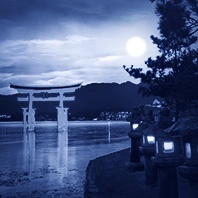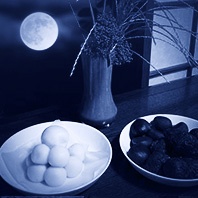“Tsukimi”: Moon-viewing in Japan

Japan has a custom, which is called “Tsukimi” or also “Otsukimi” that literally means “moon-viewing” (tsuki = jap. Moon). This tradition dates back to the Heian period (794–1192) where Japanese culture and the arts were refined to a high degree. At that time, elements of the Chinese “Mid-Autumn Moon Festival” were introduced in Japan, and festivals and rituals were held in the eighth sun month (which corresponds to September in our current calendar).
To honor the Moon they gathered at the imperial court and short poems were recited under the full moon light. Further, it was common to take the boats out to experience the full moon and its reflection even more intensely on the water.

This custom remained, although it is surely modernized and probably less poems can be heard. Japanese families and friends meet at a place where the full moon is clearly visible and they decorate this spot with pampas grass. They eat and celebrate together. Part of these Tsukimi dishes entail for example Tsukimi dango (Japanese rice dumplings), taro (Asian vegetable), chestnuts and edamame (immature soybeans in the pod). Sake (rice wine) is served and they hope for a profitable fall harvest.
This is how the full moon brings people together.

However, it is also noticeable how originally mystical traditions have become more superficial and commercial: fast food chains in Japan offer for example the Tsukimi burger (fried egg sandwiches) in September and October. This has very little to do with the Moon, the egg yolk reminds more of the Sun …
Main thing it’s tasty?

Photo (center): Wikipedia/katorisi

De bel histoire de lune dans diverts pays